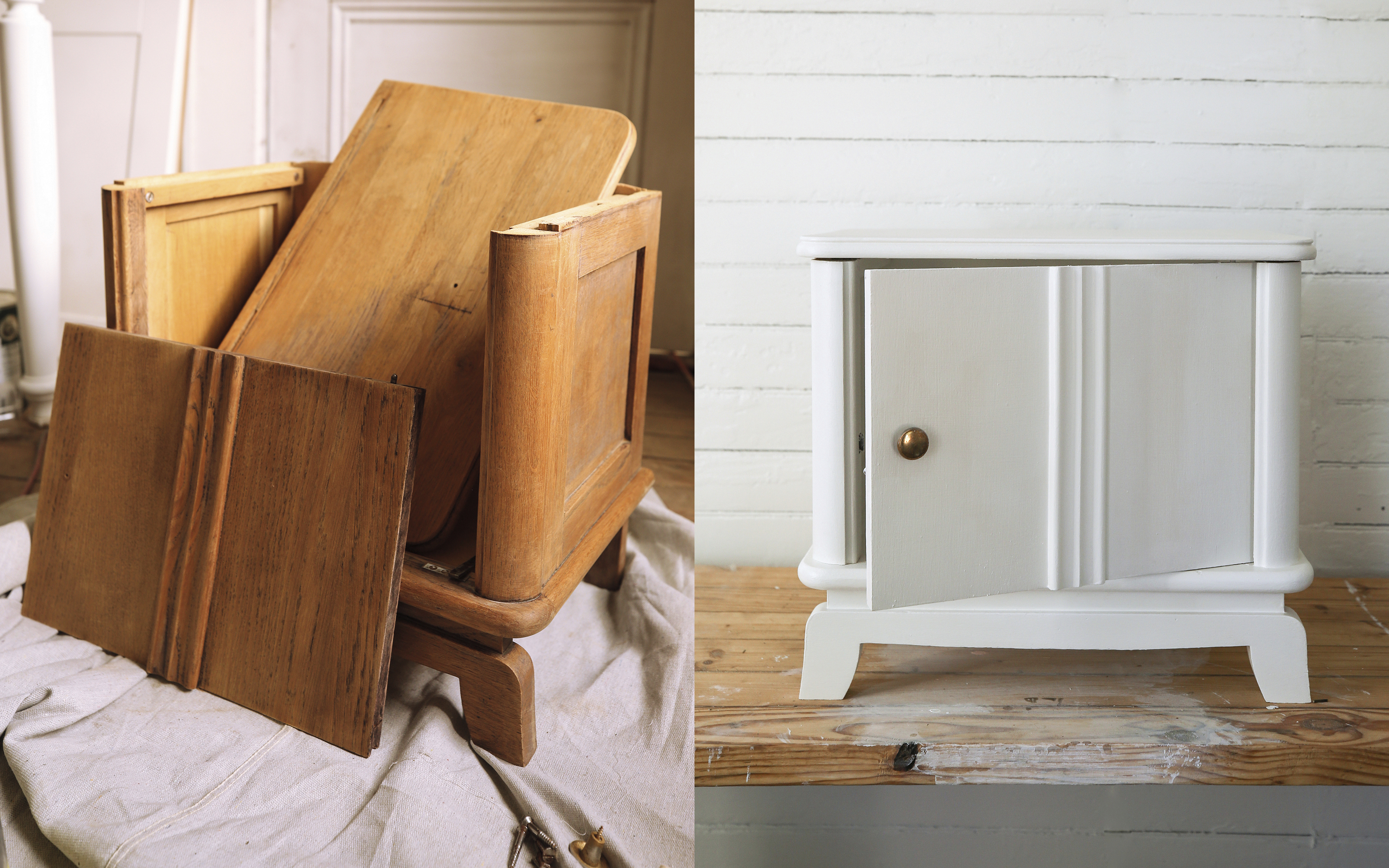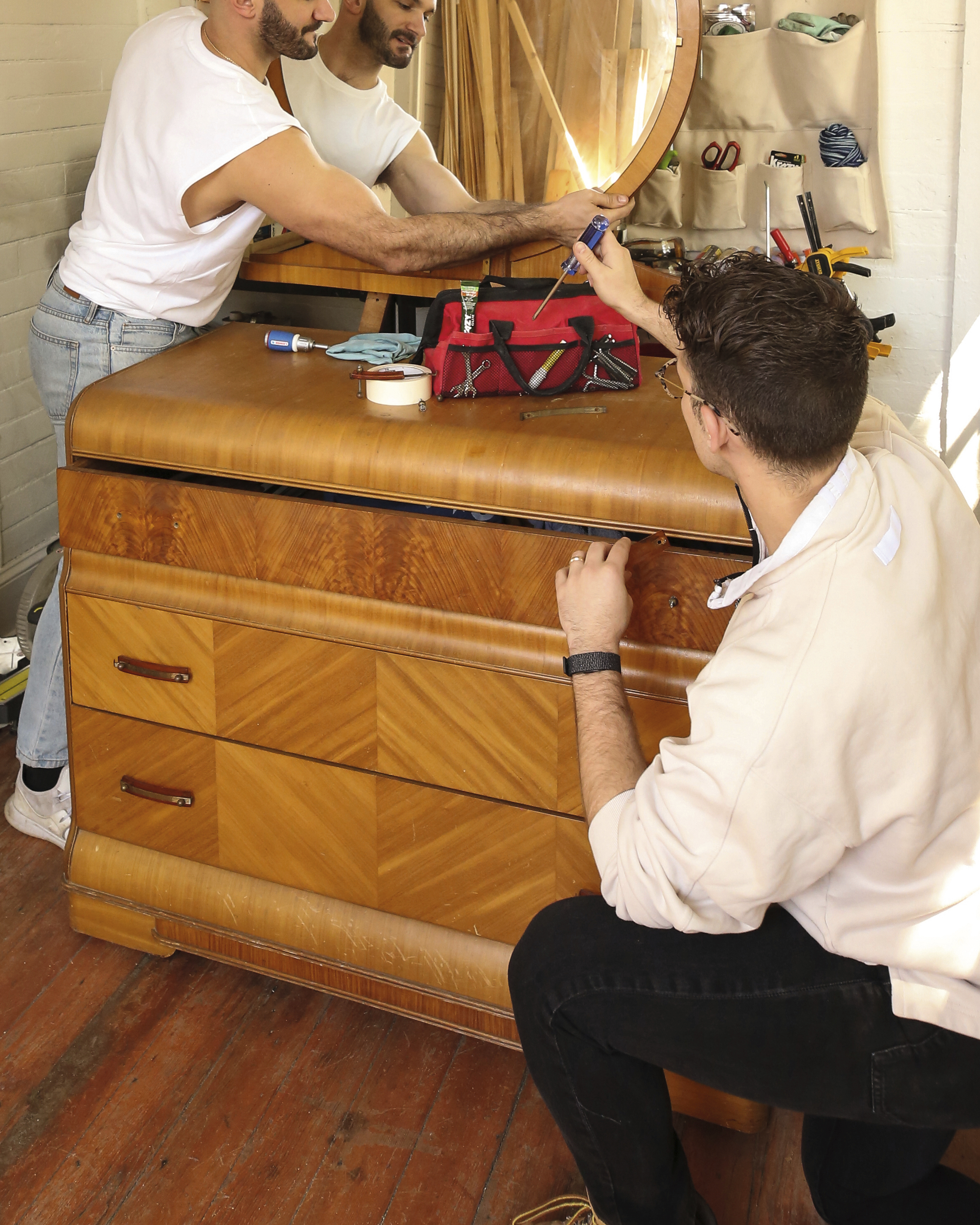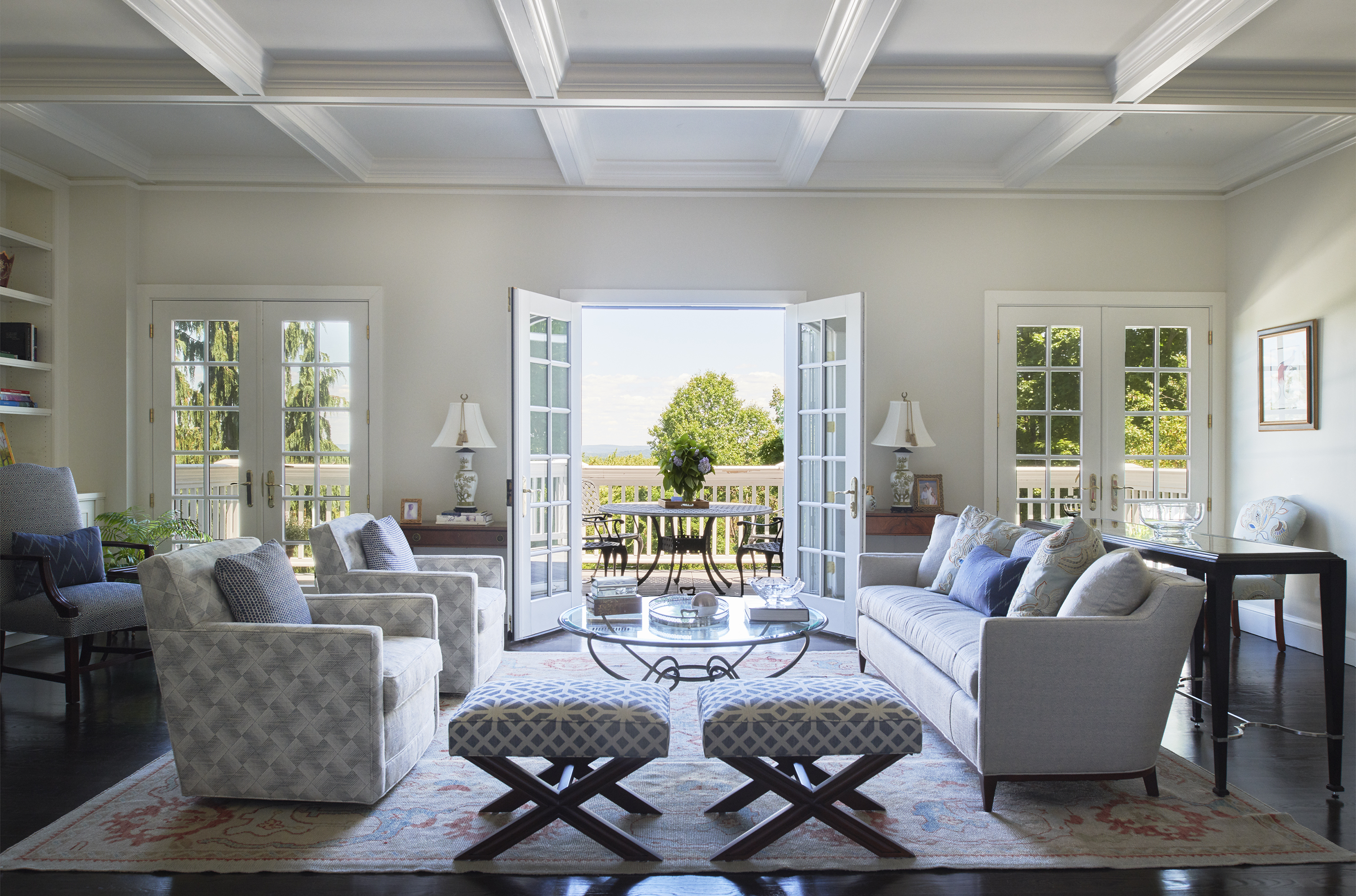Old furniture is new again
There has always been a taste for antique furniture. Nowadays a largely acquired taste.
Antiques are in vogue in part because of supply chain delays and higher prices for many custom or consumer pieces. There is also the public shift towards sustainability: environmentally conscious shoppers are opposed to disposable furniture and are trying to reuse and recycle it.
And as always, pop culture plays a role. Period-specific shows like “Bridgerton”, https://www.newstribune.com/news/2022/jun/12/stylish-green-available-antique-furniture-is-new/”Downton Abbey” and “Outlander “have given the styles of bygone eras a romantic glow. “Mad Men” fueled a hot market in mid-century modern furniture. And designers also cite a renewed interest in 70s and 80s decor.
All of this has led to throngs of designers and everyday people at auctions, antique shops and estate sales. Online platforms, such as vintage furniture retailer Chairish and collectibles site 1stDibs, also indicate sales are on the rise.
The good news from a design perspective is that it’s easy and on-trend to mix and match antiques in any room and with pieces from any era, the designers say.
A classic 18th century cherry chest of drawers could be given modern glamorous brushed copper handles. A curved 60s floor lamp could light up a room covered in award-winning Laura Ashley wallpaper.
More and more 20th century vintage pieces are appearing, whether it’s an intricately carved Edwardian side table, a Le Corbusier chair, a Pop Art era mirror or something as charming and small as a book or a vintage ceramic.
The variety of antiques swells beyond the boundaries of “traditional” decor. And a mix creates interesting stories in a room.
LOVERS OF ANTIQUE PAST AND PRESENT
Billy Baldwin, whom Architectural Digest called “America’s dean of interior design in the 1950s and 1960s”, became famous for his skilful blending of periods. He created chic homes for social figures and favored a mix of modern and antique furniture. Baldwin said an older coin “gives coin flavor”.
Jay Spectre, known for his elegant and dramatic interiors, was in love with Art Deco. And decorators like Elsie de Wolfe and Sister Parish have excelled at giving elegant turn-of-the-century European furniture to breathe in light-filled modern spaces.
Today, designer Kelly Wearstler, for example, brings adventurous style to homes as well as boutique hotels.
“My aesthetic is about mixology; always something old and new, raw and refined, masculine and feminine,” she says.
Georgia Zikas, a designer in West Hartford, Connecticut, says modern art and an achromatic rug create a nice base for mixed furniture styles and shed any tarnish.
An example of an easy update: one of Zikas’ customers had a beautiful pair of vintage Waterford crystal lamps from her mother. They replaced the dated pleated shades with crisp, white, tapered shades.
REGIONAL FOCUS
Different parts of the country seem to lean in certain directions when it comes to antiques.
“For example, in the South, where I’m based, French antiques are the most coveted because of our historically French heritage,” says Lance Thomas, chief designer at Thomas Guy Interiors in Lake Charles, Louisiana.
“I’ve found that coastal towns like West Palm Beach in Florida and Malibu in California gravitate towards vintage and antique Italian contemporary pieces. The Midwest leans towards American antiques.”
Thomas says more customers than ever are asking for antiques. He and his team recently went on a two-week buying trip to France to seek them out.
HOW TO BUY
If you’re buying antiques without seeing them, says Thomas, use a reliable auction site.
“There are some really good knockoffs and reproductions out there that would fool even the most experienced buyer,” he said. “A reputable auction site usually verifies and reports whether the item is genuine or not.”
Some of his tips for identifying genuine antiques: With mirrors, “watch out for stains.” Ancient mirrors were made of pewter and mercury or silver, and over time oxidized to create ripple and stains on the front. This patina is a good sign that it is an antique.”
For cabinets and chests of drawers, check their build quality. Look at the back of the piece, where it is less likely to be painted. “Are there dovetail joints rather than well-hidden Phillips screws? And look for the hinge mechanisms – are they hand-forged or machine-made?” said Thomas.
Carved and painted details can help confirm the age of a piece, as they indicate the furniture-making capabilities of the period.
“Many 18th century coins will have similar embellishments to their 20th century counterparts. But precision and accuracy have improved dramatically between these two periods,” says Thomas. Curved floral details, for example, probably won’t look so rounded on an 18th century piece, because they didn’t have the tools to create a perfect curve.
Beau Ciolino, who with Matt Armato wrote the new book “Probably This Housewarming” (Abrams), recommends the www.estatesales.net app to receive sales alerts in your area.
“The best part about antiques is that they can be so accessible,” says Ciolino. “While old-school auction houses have a reputation for offering fine antiques, we also like to browse Facebook Marketplace, Craigslist, consignment stores and estate sales.”
Other options include EBay, Etsy, and ZZ Driggs, which sell and rent out vintage furniture. You might not be able to swing the $3,000 for a James Mont Art Deco leather lounge chair, but you might be able to afford its $75 monthly rent for a year.
A source that was once restricted to the design trade has opened its doors to the public in New York. The Gallery 200 Lex is 33,000 square feet of vintage and antique furniture from dozens of merchants. You can also see what The Gallery merchants have posted on Incollect.
OVERTURNING FURNITURE
Ciolino and Armato say they’ve seen a trend of “furniture flipping.”
“While house flipping can be expensive and time consuming, many furniture turners take worn pieces and revitalize them to their original glory or create an entirely new piece by re-staining, painting and replacing hardware, then selling to keep them or keep them at home,” says Ciolino.
He says padding is generally best left to the pros.
Wooden items, especially those without intricate details, are great for beginner DIYers, says Armato. “Dressers or side tables can usually only use a light sanding, paint or stain if desired, and a coat of filler like clear enamel or linseed oil. Some metal parts like outdoor iron chairs are also very easy to DIY.”
Mary Maloney of Bee’s Knees Interior Design in Hopkinton, Massachusetts, revives old wooden furniture by painting it in cheerful hues.
“My mom taught me to spot great pieces that need a little love and reinvention,” says Maloney. “I still treasure my first purchase – a cute little chest of drawers that I found on an antiques excursion with her over 40 years ago. When I was updating our guest bedroom, I took it painted in sunny yellow.”
Antique furniture generally requires a general gentle cleaning before any removal or covering of unwanted scuffs and scratches. Unless the antique lamps have already been rewired, it’s best to have them done by a professional. And you’ll probably want to update the shades.
 This combination of two photos shows a disassembled wood cabinet, left, and the cabinet refinished with white paint and brass hardware, featured in the book “Probably This Housewarming: A Guide to Creating a Home You Adore”, by Beau Ciolino and Matt Armato. (Beau Ciolino via AP)
This combination of two photos shows a disassembled wood cabinet, left, and the cabinet refinished with white paint and brass hardware, featured in the book “Probably This Housewarming: A Guide to Creating a Home You Adore”, by Beau Ciolino and Matt Armato. (Beau Ciolino via AP) This image posted by Kyle Caldwell Photography shows a dresser refinished with paint and wallpaper by Mary Maloney of Bee’s Knees Interior Design in Hopkinton, Mass. Maloney revives old wooden furniture by painting it in cheerful hues and often applying patterned papers. (Kyle Caldwell Photography via AP)
This image posted by Kyle Caldwell Photography shows a dresser refinished with paint and wallpaper by Mary Maloney of Bee’s Knees Interior Design in Hopkinton, Mass. Maloney revives old wooden furniture by painting it in cheerful hues and often applying patterned papers. (Kyle Caldwell Photography via AP) This image shows a vintage consignment store waterfall dresser purchased in a small town an hour from New Orleans, featured in the book “Probably This Housewarming: A Guide to Creating a Home You Adore”, by Beau Ciolino and Matt Armato. (Beau Ciolino via AP)
This image shows a vintage consignment store waterfall dresser purchased in a small town an hour from New Orleans, featured in the book “Probably This Housewarming: A Guide to Creating a Home You Adore”, by Beau Ciolino and Matt Armato. (Beau Ciolino via AP) This image shows a living room by Georgia Zikas, designer in West Hartford, Conn. Designers say vintage pieces can work well with any style and go well with modern ones. (Jane Beiles Photography via AP)
This image shows a living room by Georgia Zikas, designer in West Hartford, Conn. Designers say vintage pieces can work well with any style and go well with modern ones. (Jane Beiles Photography via AP)